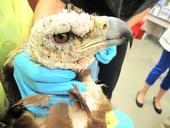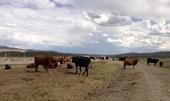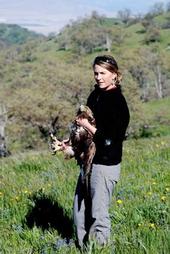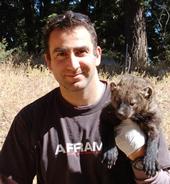- Author: Monique Garcia Gunther

Cattle ranchers in California, Nevada and Oregon are one step closer to having a vaccine available to treat a tick-borne bacterial disease – commonly known as foothill abortion – which kills cow fetuses.
The USDA approved the expansion of ongoing field trials in November for an experimental vaccine, developed by UC Davis veterinary researchers, after it was shown to be effective in preventing foothill abortion in more than 2,000 cattle.
Foothill abortion – endemic in California's coastal range and the foothill regions of California, Southern Oregon and Northern Nevada – is a bacterial disease in cattle also known as epizootic bovine abortion. It is a major cause of...
- Author: Trina Wood

Golden eagles in the western United States may be at risk of infestation by an exotic and possibly new species of mite that causes a fatal skin disease, according to an Emerging Infectious Diseases case report published in October 2014.
Two adult golden eagles that were recovered in California between July and August 2013 were infested by a mite with morphologic features similar to those of Micnemidocoptes derooi, a species of mite seen only once, in an African palm swift in West Africa more than 40 years ago.
Both eagles had substantial feather loss and scabbing on the head, neck, and legs and...
- Contributor: Trina Wood

Long before Governor Brown declared an official drought for the state, many of California's ranchers knew this would be a tough year. Drought can increase the risks of animal poisonings and nutritional imbalances, and necessitate additional vigilance to assure cattle health and productivity. Veterinary toxicologists Robert H. Poppenga and Birgit Puschner, with the California Animal Health and Food Safety Laboratory System at UC Davis School of Veterinary Medicine, provide this critical information to dairy and beef producers to keep their livestock healthy during the drought. Key threats to cattle include:
Water quality — Water is the most critical factor in the...
- Contributor: Trina Wood

California recently passed a law that will ban the use of lead ammunition when taking wildlife with a firearm. The intent is to protect scavenging birds and other wildlife from the threats of lead poisoning from spent lead ammunition.
While the new law, which was passed on Oct. 11, 2013, will be phased in over the next six years, the research that helped shape it has been going on for some time and much of it was done by researchers at the University of California, Davis.
UC Davis wildlife epidemiologist Terra Kelly (in photo at right) studied the effects of big game hunting on lead exposure in carrion-eating birds like eagles and turkey vultures and monitored the effect of a 2008 law that made it...
- Author: Trina Wood

Rodenticides used on illegal marijuana farms have already been shown to pose serious harm to the fisher—a cat-sized carnivore found in forests across Canada and four regions in the U.S. (Previous news article.)
Mourad Gabriel, a doctoral candidate with the Veterinary Genetics Laboratory at UC Davis School of Veterinary Medicine, provides a more comprehensive look at the situation in the recent issue of...



